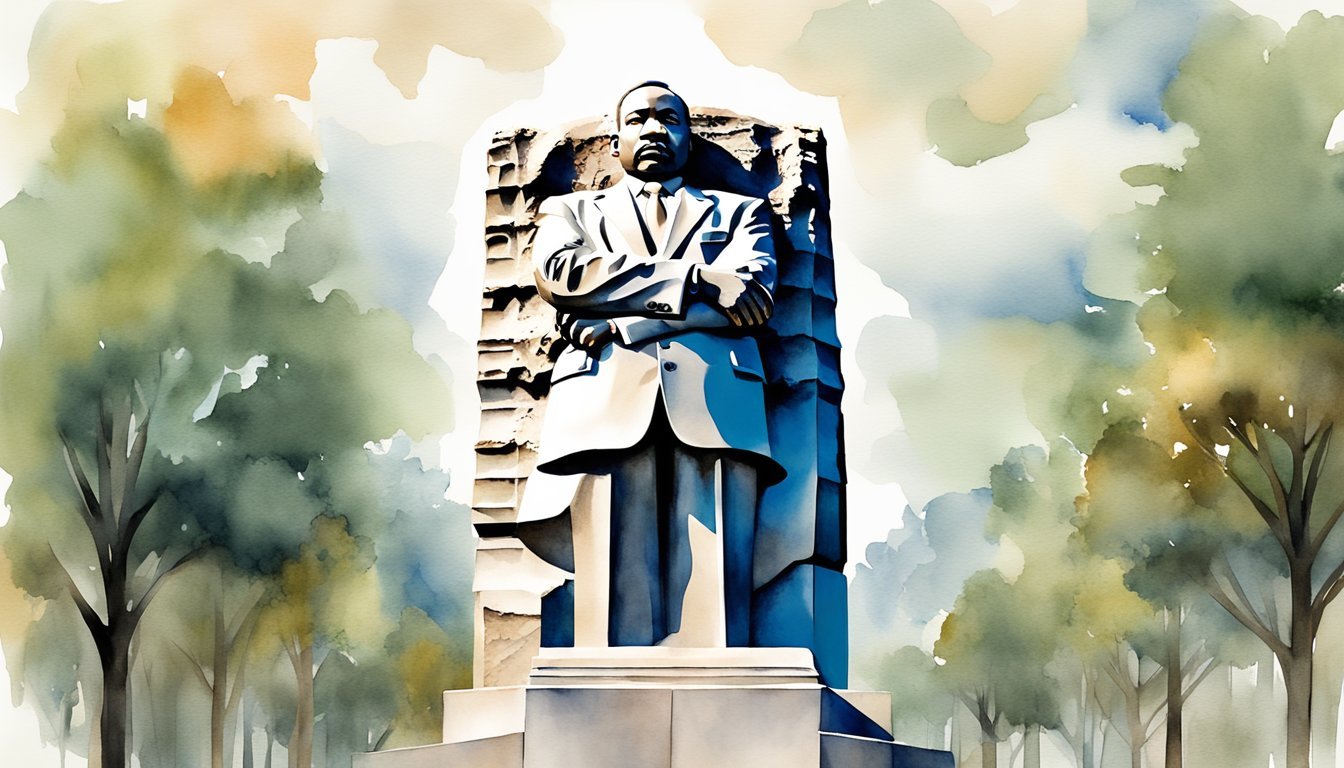Overview of the Martin Luther King Jr. Monument
The Martin Luther King Jr. Monument stands as a testament to the legacy of Dr. King and his leadership during the Civil Rights Movement. This national memorial integrates a tranquil environment with powerful symbolism located in the nation’s capital.
Location and Dedication
The Monument is nestled in West Potomac Park next to the National Mall in Washington, D.C., forming a visual line of leadership between the Lincoln and Jefferson Memorials. It was dedicated to the public on August 28, 2011, coinciding with the 48th anniversary of the seminal March on Washington for Jobs and Freedom and Dr. King’s historic “I Have a Dream” speech.
Design Elements
Dominating the site is the Stone of Hope, a commanding granite statue of Martin Luther King Jr. emerging from the Mountain of Despair, both elements intricately reflecting the struggle for Civil Rights. The Inscription Wall accompanies the central sculpture, featuring 14 excerpts from King’s speeches and writings, inviting contemplation amidst the Tidal Basin’s serene backdrop. Managed by the National Park Service, the Memorial aptly commemorates a man who transformed the fabric of American society.
Cultural and Historical Significance

The Martin Luther King, Jr. Memorial stands not only as a testament to the individual achievements of a leading civil rights figure but also symbolizes pivotal moments and ideals in American history, such as the Civil Rights Movement and the enduring pursuit of racial equality.
Symbolic Representation
The Memorial’s design is replete with symbolism that communicates the values Martin Luther King, Jr. championed. The centerpiece Stone of Hope features a likeness of Dr. King, emerging from a “Mountain of Despair,” capturing the essence of his resilience in the face of hardship. This concept draws directly from his famous I Have a Dream speech, delivered during the March on Washington, epitomizing both the struggle and the optimism at the heart of his message. His position, gazing over the Tidal Basin towards the horizon, reinforces a forward-looking vision of hope and determination.
Educational and Inspirational Impact
The Memorial serves as an educational landmark by providing visitors with a powerful lens into the past. It highlights quotes from Dr. King’s speeches, sermons, and writings etched into the surrounding walls, offering insight into his thoughts on love, peace, and democracy. These are more than mere words; they are the foundations of King’s legacy, inspiring current and future generations. The site commemorates not just King as a Nobel Peace Prize laureate and advocate of nonviolent resistance but also celebrates the outcomes he helped realize, such as the Civil Rights Act of 1964. Thus, the Memorial represents a confluence of education and inspiration, perpetuating the pursuit of equality and justice.

